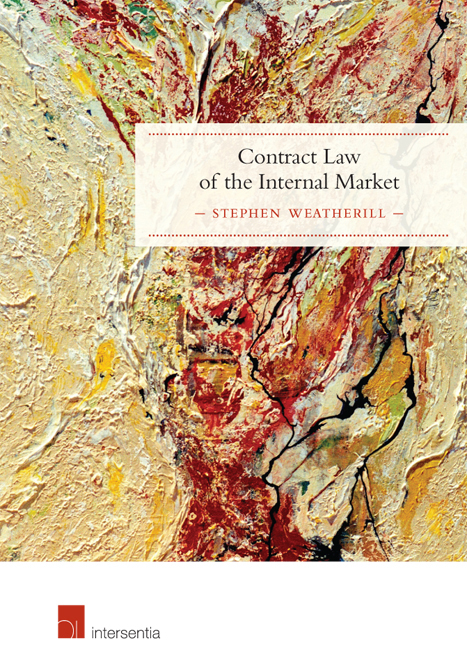Book contents
- Frontmatter
- Preface
- Contents
- Table of Cases: Alphabetical
- Table of Cases: Chronological
- Chapter 1 The Landscape of Contract Law in the EU
- Chapter 2 Contractual Autonomy and National Contract Law in the Internal Market
- Chapter 3 The EU as a Source of Contract Law
- Chapter 4 Themes and Principles in the EU's Contract Law Acquis
- Chapter 5 Improving the Regulatory Environment
- Chapter 6 Models of Harmonisation: Maximum or Minimum
- Chapter 7 Measuring the Effects of the Contract Law of the Internal Market
- Index
Chapter 6 - Models of Harmonisation: Maximum or Minimum
Published online by Cambridge University Press: 19 September 2018
- Frontmatter
- Preface
- Contents
- Table of Cases: Alphabetical
- Table of Cases: Chronological
- Chapter 1 The Landscape of Contract Law in the EU
- Chapter 2 Contractual Autonomy and National Contract Law in the Internal Market
- Chapter 3 The EU as a Source of Contract Law
- Chapter 4 Themes and Principles in the EU's Contract Law Acquis
- Chapter 5 Improving the Regulatory Environment
- Chapter 6 Models of Harmonisation: Maximum or Minimum
- Chapter 7 Measuring the Effects of the Contract Law of the Internal Market
- Index
Summary
INTRODUCTION
The question which is addressed in this chapter is simply stated. It asks what is the scope for action at national level in a field in which the EU has adopted legislation. The most acute dimension of this question asks whether Member States may adopt stricter rules than those set as a harmonised norm by the EU. It is simple enough to ask these questions, but providing answers is not simple at all. The Treaty is evasive on the point. Legislative practice varies, policy preferences among the EU's political institutions have fluctuated (and continue to do so) and the Court of Justice has muddied the waters still further by delivering a spray of rulings, examined below, which seem irreconcilable.
The basic choice lies between a model of ‘maximum harmonisation’ and a model of ‘minimum harmonisation’. This chapter is built on the argument that it is open to the EU, in adopting measures of harmonisation, to choose between setting rules that deny Member States room to choose stricter standards – this is the model of maximum harmonisation – and instead setting rules that allow scope for stricter national standards above the harmonised norm – this is minimum harmonisation. But it is admitted at the outset that this argument is made against a contested constitutional and policy background. The chapter begins by examining the governing Treaty superstructure (section 6.2). It then maps legislative practice in the field of harmonisation (section 6.3), before turning to exploration of the Court's unhelpfully ambiguous legacy in the field (section 6.4). It then tracks the Commission's policy-driven crusade against the technique of minimum harmonisation and in favour of maximum harmonisation, which has been animated by a belief that the maximum model is the superior means to deliver a well functioning internal market for the EU (section 6.5). This has clear resonance in the field of contract law. It then shows how politically contested this has – quite properly – become, and explains how the purity of the Commission's vision has met political resistance and how accordingly minimum harmonisation retains a place in the strategies for the construction of the internal market (section 6.6).
- Type
- Chapter
- Information
- Contract Law of the Internal Market , pp. 223 - 246Publisher: IntersentiaPrint publication year: 2016



